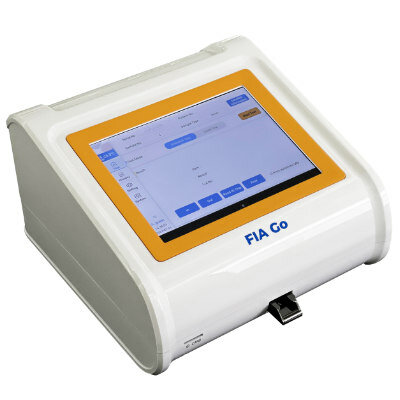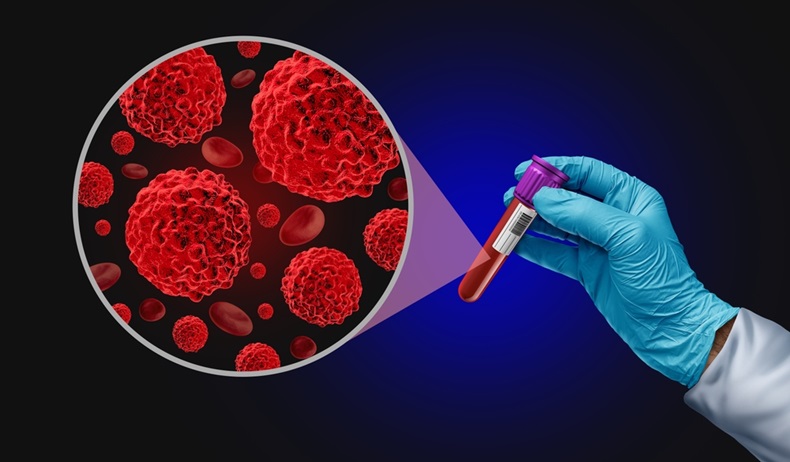Tumor Suppressor Gene Variants Identified for Leukemia Patients
|
By LabMedica International staff writers Posted on 16 Jan 2018 |
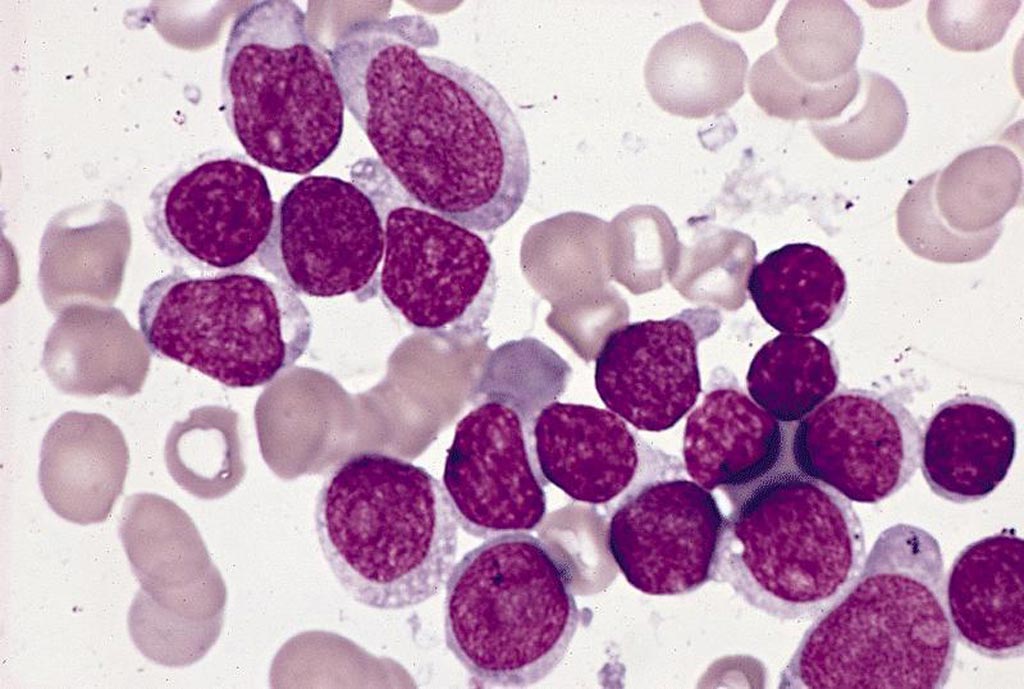
Image: Acute lymphoblastic leukemia (Photo courtesy of Pathology Outlines).
Newly identified germline variations in a key tumor suppressor gene predispose individuals to develop leukemia as children and leave them with a 1-in-4 chance of developing a second cancer later. Acute lymphoblastic leukemia is the most common childhood cancer and in most cases, the exact cause is unknown.
Germline Tumor Protein 53 (TP5) variation is the genetic basis of Li-Fraumeni syndrome, a highly penetrant cancer predisposition condition. Recent reports of germline TP53 variants in childhood hypodiploid acute lymphoblastic leukemia (ALL) suggest that this type of leukemia is another manifestation of Li-Fraumeni syndrome.
Scientists at St. Jude Children's Research Hospital (Memphis, TN, USA) and their colleagues performed targeted sequencing of TP53 coding regions was performed on 3,801 children from the Children’s Oncology Group frontline ALL clinical trials. TP53 variant pathogenicity was evaluated according to investigational determined transcriptional activity, in silico prediction of damaging effects, and prevalence in non-ALL control populations. TP53 variants were analyzed for their association with ALL presenting features and treatment outcomes.
The team identified 49 unique nonsilent rare TP53 coding variants in 77 (2.0%) of 3,801 patients sequenced, of which 22 variants were classified as pathogenic. TP53 pathogenic variants were significantly over-represented in ALL compared with non-ALL controls. The high-risk variants were most common in the high-risk leukemia subtype hypodiploid ALL. About 65% of patients who carried high-risk TP53 variant in this study had the hypodiploid subtype of ALL. Children with TP53 pathogenic variants were significantly older with a median age of 15.5 years at ALL diagnosis. Carrying germline TP53 pathogenic variants was associated with inferior event-free survival and overall survival and in particular, children with TP53 pathogenic variants were at a dramatically higher risk of second cancers than those without pathogenic variants, with 5-year cumulative incidence of 25.1% and 0.7%.
The 26 patients in this study who carried the high-risk TP53 variants were also almost four times more likely than other pediatric ALL patients to die of their disease or related complications. Jun J. Yang, PhD, the corresponding author of the study, said, “These germline variations are a double whammy for carriers. Not only is their risk of developing leukemia very high, they are also more likely to relapse or develop a second cancer. Maybe these patients should avoid certain ALL therapies in order to reduce their risk of developing another cancer. I believe this finding may change treatment and follow-up for these high-risk patients. The study was published on January 4, 2018, in the Journal of Clinical Oncology.
Related Links:
St. Jude Children's Research Hospital
Germline Tumor Protein 53 (TP5) variation is the genetic basis of Li-Fraumeni syndrome, a highly penetrant cancer predisposition condition. Recent reports of germline TP53 variants in childhood hypodiploid acute lymphoblastic leukemia (ALL) suggest that this type of leukemia is another manifestation of Li-Fraumeni syndrome.
Scientists at St. Jude Children's Research Hospital (Memphis, TN, USA) and their colleagues performed targeted sequencing of TP53 coding regions was performed on 3,801 children from the Children’s Oncology Group frontline ALL clinical trials. TP53 variant pathogenicity was evaluated according to investigational determined transcriptional activity, in silico prediction of damaging effects, and prevalence in non-ALL control populations. TP53 variants were analyzed for their association with ALL presenting features and treatment outcomes.
The team identified 49 unique nonsilent rare TP53 coding variants in 77 (2.0%) of 3,801 patients sequenced, of which 22 variants were classified as pathogenic. TP53 pathogenic variants were significantly over-represented in ALL compared with non-ALL controls. The high-risk variants were most common in the high-risk leukemia subtype hypodiploid ALL. About 65% of patients who carried high-risk TP53 variant in this study had the hypodiploid subtype of ALL. Children with TP53 pathogenic variants were significantly older with a median age of 15.5 years at ALL diagnosis. Carrying germline TP53 pathogenic variants was associated with inferior event-free survival and overall survival and in particular, children with TP53 pathogenic variants were at a dramatically higher risk of second cancers than those without pathogenic variants, with 5-year cumulative incidence of 25.1% and 0.7%.
The 26 patients in this study who carried the high-risk TP53 variants were also almost four times more likely than other pediatric ALL patients to die of their disease or related complications. Jun J. Yang, PhD, the corresponding author of the study, said, “These germline variations are a double whammy for carriers. Not only is their risk of developing leukemia very high, they are also more likely to relapse or develop a second cancer. Maybe these patients should avoid certain ALL therapies in order to reduce their risk of developing another cancer. I believe this finding may change treatment and follow-up for these high-risk patients. The study was published on January 4, 2018, in the Journal of Clinical Oncology.
Related Links:
St. Jude Children's Research Hospital
Latest Hematology News
- Next Generation Instrument Screens for Hemoglobin Disorders in Newborns
- First 4-in-1 Nucleic Acid Test for Arbovirus Screening to Reduce Risk of Transfusion-Transmitted Infections
- POC Finger-Prick Blood Test Determines Risk of Neutropenic Sepsis in Patients Undergoing Chemotherapy
- First Affordable and Rapid Test for Beta Thalassemia Demonstrates 99% Diagnostic Accuracy
- Handheld White Blood Cell Tracker to Enable Rapid Testing For Infections
- Smart Palm-size Optofluidic Hematology Analyzer Enables POCT of Patients’ Blood Cells
- Automated Hematology Platform Offers High Throughput Analytical Performance
- New Tool Analyzes Blood Platelets Faster, Easily and Accurately
- First Rapid-Result Hematology Analyzer Reports Measures of Infection and Severity at POC
- Bleeding Risk Diagnostic Test to Reduce Preventable Complications in Hospitals
- True POC Hematology Analyzer with Direct Capillary Sampling Enhances Ease-of-Use and Testing Throughput
- Point of Care CBC Analyzer with Direct Capillary Sampling Enhances Ease-of-Use and Testing Throughput
- Blood Test Could Predict Outcomes in Emergency Department and Hospital Admissions
- Novel Technology Diagnoses Immunothrombosis Using Breath Gas Analysis
- Advanced Hematology System Allows Labs to Process Up To 119 Complete Blood Count Results per Hour
- Unique AI-Based Approach Automates Clinical Analysis of Blood Data
Channels
Clinical Chemistry
view channel
3D Printed Point-Of-Care Mass Spectrometer Outperforms State-Of-The-Art Models
Mass spectrometry is a precise technique for identifying the chemical components of a sample and has significant potential for monitoring chronic illness health states, such as measuring hormone levels... Read more.jpg)
POC Biomedical Test Spins Water Droplet Using Sound Waves for Cancer Detection
Exosomes, tiny cellular bioparticles carrying a specific set of proteins, lipids, and genetic materials, play a crucial role in cell communication and hold promise for non-invasive diagnostics.... Read more
Highly Reliable Cell-Based Assay Enables Accurate Diagnosis of Endocrine Diseases
The conventional methods for measuring free cortisol, the body's stress hormone, from blood or saliva are quite demanding and require sample processing. The most common method, therefore, involves collecting... Read moreMolecular Diagnostics
view channel
Simple Blood Test Could Enable First Quantitative Assessments for Future Cerebrovascular Disease
Cerebral small vessel disease is a common cause of stroke and cognitive decline, particularly in the elderly. Presently, assessing the risk for cerebral vascular diseases involves using a mix of diagnostic... Read more
New Genetic Testing Procedure Combined With Ultrasound Detects High Cardiovascular Risk
A key interest area in cardiovascular research today is the impact of clonal hematopoiesis on cardiovascular diseases. Clonal hematopoiesis results from mutations in hematopoietic stem cells and may lead... Read moreImmunology
view channel
Diagnostic Blood Test for Cellular Rejection after Organ Transplant Could Replace Surgical Biopsies
Transplanted organs constantly face the risk of being rejected by the recipient's immune system which differentiates self from non-self using T cells and B cells. T cells are commonly associated with acute... Read more
AI Tool Precisely Matches Cancer Drugs to Patients Using Information from Each Tumor Cell
Current strategies for matching cancer patients with specific treatments often depend on bulk sequencing of tumor DNA and RNA, which provides an average profile from all cells within a tumor sample.... Read more
Genetic Testing Combined With Personalized Drug Screening On Tumor Samples to Revolutionize Cancer Treatment
Cancer treatment typically adheres to a standard of care—established, statistically validated regimens that are effective for the majority of patients. However, the disease’s inherent variability means... Read moreMicrobiology
view channelEnhanced Rapid Syndromic Molecular Diagnostic Solution Detects Broad Range of Infectious Diseases
GenMark Diagnostics (Carlsbad, CA, USA), a member of the Roche Group (Basel, Switzerland), has rebranded its ePlex® system as the cobas eplex system. This rebranding under the globally renowned cobas name... Read more
Clinical Decision Support Software a Game-Changer in Antimicrobial Resistance Battle
Antimicrobial resistance (AMR) is a serious global public health concern that claims millions of lives every year. It primarily results from the inappropriate and excessive use of antibiotics, which reduces... Read more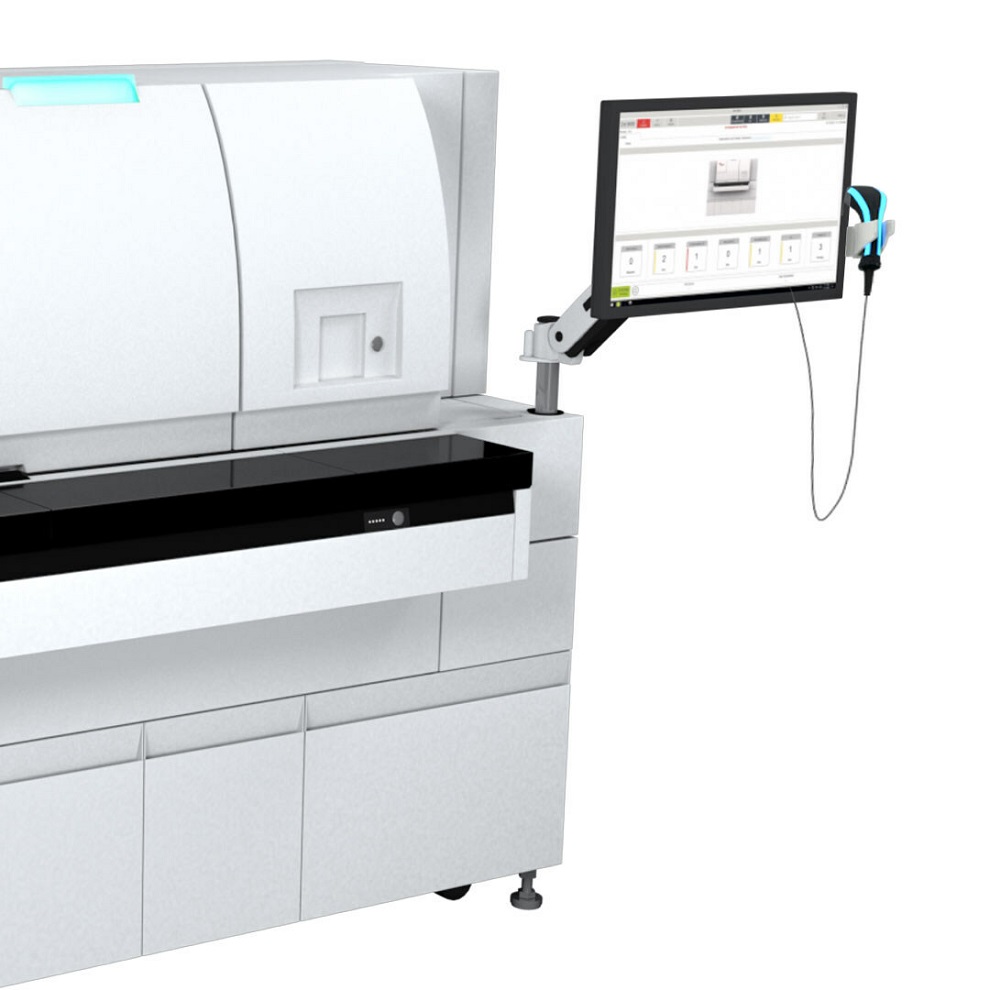
New CE-Marked Hepatitis Assays to Help Diagnose Infections Earlier
According to the World Health Organization (WHO), an estimated 354 million individuals globally are afflicted with chronic hepatitis B or C. These viruses are the leading causes of liver cirrhosis, liver... Read more
1 Hour, Direct-From-Blood Multiplex PCR Test Identifies 95% of Sepsis-Causing Pathogens
Sepsis contributes to one in every three hospital deaths in the US, and globally, septic shock carries a mortality rate of 30-40%. Diagnosing sepsis early is challenging due to its non-specific symptoms... Read morePathology
view channel.jpg)
Use of DICOM Images for Pathology Diagnostics Marks Significant Step towards Standardization
Digital pathology is rapidly becoming a key aspect of modern healthcare, transforming the practice of pathology as laboratories worldwide adopt this advanced technology. Digital pathology systems allow... Read more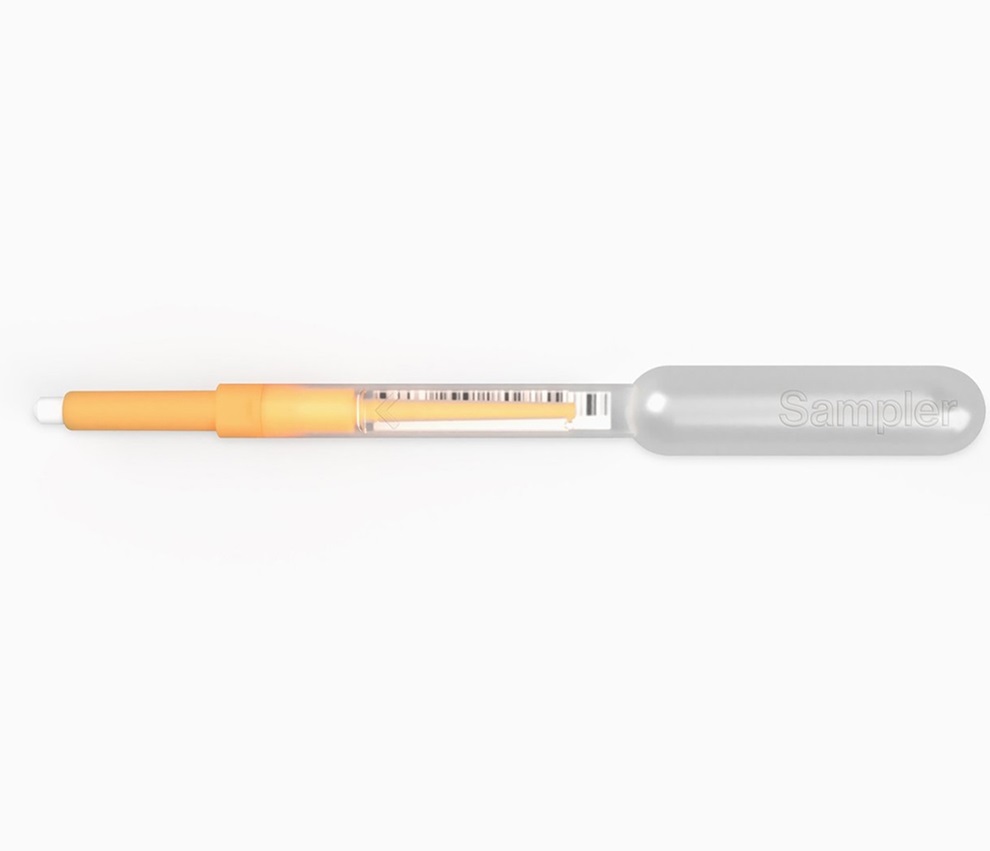
First of Its Kind Universal Tool to Revolutionize Sample Collection for Diagnostic Tests
The COVID pandemic has dramatically reshaped the perception of diagnostics. Post the pandemic, a groundbreaking device that combines sample collection and processing into a single, easy-to-use disposable... Read moreAI-Powered Digital Imaging System to Revolutionize Cancer Diagnosis
The process of biopsy is important for confirming the presence of cancer. In the conventional histopathology technique, tissue is excised, sliced, stained, mounted on slides, and examined under a microscope... Read more
New Mycobacterium Tuberculosis Panel to Support Real-Time Surveillance and Combat Antimicrobial Resistance
Tuberculosis (TB), the leading cause of death from an infectious disease globally, is a contagious bacterial infection that primarily spreads through the coughing of patients with active pulmonary TB.... Read moreTechnology
view channel
New Diagnostic System Achieves PCR Testing Accuracy
While PCR tests are the gold standard of accuracy for virology testing, they come with limitations such as complexity, the need for skilled lab operators, and longer result times. They also require complex... Read more
DNA Biosensor Enables Early Diagnosis of Cervical Cancer
Molybdenum disulfide (MoS2), recognized for its potential to form two-dimensional nanosheets like graphene, is a material that's increasingly catching the eye of the scientific community.... Read more
Self-Heating Microfluidic Devices Can Detect Diseases in Tiny Blood or Fluid Samples
Microfluidics, which are miniature devices that control the flow of liquids and facilitate chemical reactions, play a key role in disease detection from small samples of blood or other fluids.... Read more
Breakthrough in Diagnostic Technology Could Make On-The-Spot Testing Widely Accessible
Home testing gained significant importance during the COVID-19 pandemic, yet the availability of rapid tests is limited, and most of them can only drive one liquid across the strip, leading to continued... Read moreIndustry
view channel_1.jpg)
Thermo Fisher and Bio-Techne Enter Into Strategic Distribution Agreement for Europe
Thermo Fisher Scientific (Waltham, MA USA) has entered into a strategic distribution agreement with Bio-Techne Corporation (Minneapolis, MN, USA), resulting in a significant collaboration between two industry... Read more
ECCMID Congress Name Changes to ESCMID Global
Over the last few years, the European Society of Clinical Microbiology and Infectious Diseases (ESCMID, Basel, Switzerland) has evolved remarkably. The society is now stronger and broader than ever before... Read more







